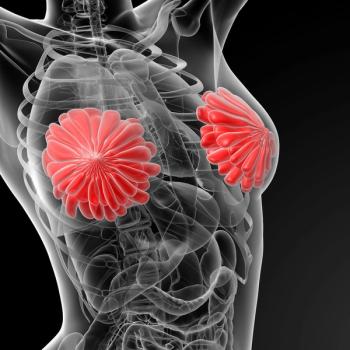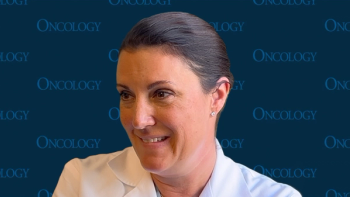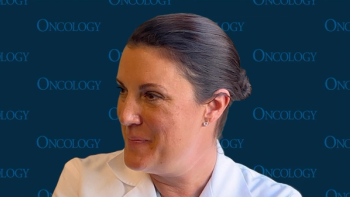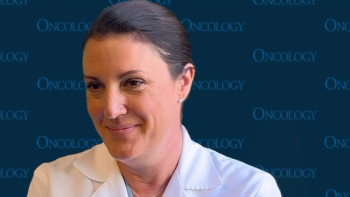
Five years of adjuvant exemestane offers no benefit over sequential tamoxifen-exemestane
Exemestane alone and exemestane following tamoxifen, are equally appropriate treatment options, according to results from TEAM, the first trial prospectively powered to test the superiority of five years of aromatase inhibitors compared with a specific sequential strategy in postmenopausal women with endocrine-sensitive breast cancer.
SAN ANTONIO-Up-front treatment with exemestane (Aromasin) couldn’t trump sequential treatment with tamoxifen and exemestane in postmenopausal women with hormone-sensitive early breast cancer, according to results from the phase III TEAM trial.
“We are all very familiar with the data comparing tamoxifen with aromatase inhibitors in postmenopausal women with early breast cancer,” said presenter Dan Rea, MD, referring to an SABCS 2008 presentation (
“Last year, we heard . . . the meta-analysis that given at diagnosis, [treatment with] aromatase inhibitors resulted in a 23% proportional reduction in recurrence,” Dr. Rea said. “We also heard that if aromatase inhibitors are introduced after two to three years of prior tamoxifen therapy, we see a somewhat larger proportional reduction in recurrence of 29%.”
But a question that still needed to be answered was whether one of these strategies-exemestane up-front or tamoxifen with a switch to exemestane sequentially-would come out on top.
The TEAM (Tamoxifen and Exemestane Adjuvant Multinational) trial was conducted in nine countries, including the U.S., the U.K., Germany, and Japan, to compare adjuvant primary therapy for early invasive breast cancer. Eligible women had to be hormone receptor-positive, be postmenopausal, have completed surgery with curative intent, and have no metastases. Chemotherapy and radiotherapy were permitted. Adjuvant hormone therapy was required to have started within 10 weeks of completed surgery and/or within 10 weeks of completed chemotherapy, Dr. Rea said.
The 9,779 patients were randomized to receive either tamoxifen followed by exemestane or exemestane only for a total of six years of treatment. There were two primary endpoints for TEAM: disease-free survival (DFS) at 2.5 years and DFS at five years (SABCS 2009 abstract 11).
According to the most recent results from the TEAM trial, 60% of patients have completed five years of follow up. The number of DFS events was 714 in the tamoxifen and exemestane group vs 712 for exemestane-only group. The total number of DFS events was 1,426. There were 820 events of distant metastases and 127 events of local recurrence in total. There were 406 intercurrent deaths.
While 85% of the TEAM population was disease-free at five years, Dr. Rea pointed out that there was no difference in DFS between the group that received exemestane at diagnosis and the group that had tamoxifen followed by exemestane (P = .604).
In terms of overall survival, there was no survival advantage for one strategy over the other (P = .999). Overall, the patients are doing very well, with more than 90% of them alive at five years, he said. Finally, neither strategy offered a benefit for time to recurrence (P = .293).
Adverse events played out as expected: patients who received tamoxifen experienced more adverse effects specific to that therapy (endometrial abnormalities, muscle cramps, venous thrombosis), while patients exposed to exemestane had more adverse events linked to aromatase inhibitors (hyperlipidemia, hypertension, osteoporosis).
In a related SABCS 2009 presentation, TEAM researchers mined the data for potential prognostic and predictive biomarkers and found a preferential treatment benefit for exemestane vs tamoxifen in HER2/3-negative women (abstract 75). These modeling results could help clinicians decide which women will benefit most from one strategy over than the other.
Dr. Rea showed the audience a photo of two horses running neck and neck in a race, to represent exemestane alone and tamoxifen followed by exemestane. “This is a dead heat,” he said. “One of these horses had a jockey switch halfway through the race. Whether these two horses have crossed the finishing line, or whether they have two or three more laps to go before we find out who the real winner is, remains to be seen.”
Newsletter
Stay up to date on recent advances in the multidisciplinary approach to cancer.

















































































